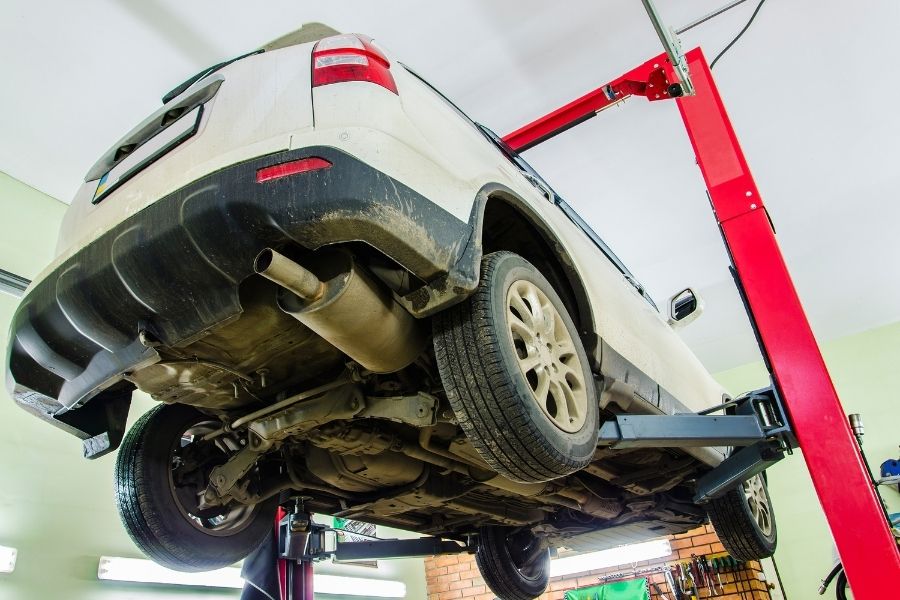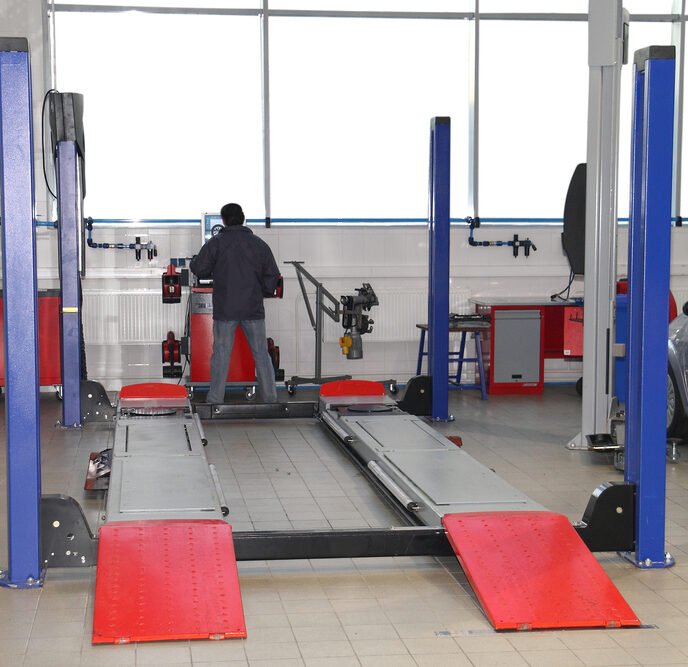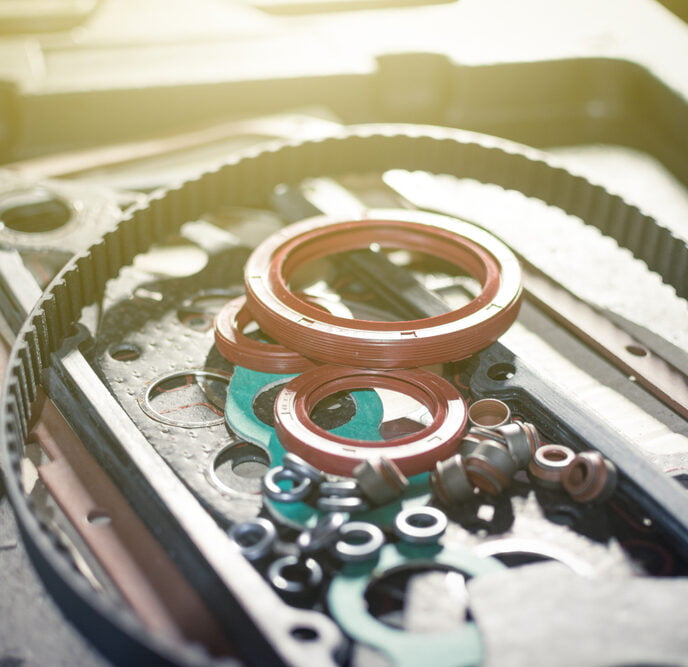How to Find Jack Points On a Car

When it comes to cars, we are all focused on safety. Whether it is wearing a safety belt, stopping for a red light, following the speed limit, or having your car tell you when to “BRAKE” if you are about to hit an object, our society works to makes sure cars are safe for both the driver and those around the vehicle.
As with any activity dealing with a car, fixing a car also requires safety precautions. Generally, to fix a car you need to elevate the car to be able to work on the car’s undercarriage. To lift a car, you will encounter what is an all-too-common sight in any mechanic shop: a two-post lift. Specific safety precautions apply to a two-post lift, such that, if a vehicle were to fall off of a lift, the fall likely was a result of user error, and likely could have been prevented.
The Different Types of Two Post Car Lifts
To start, a two-post list engages the frame of a vehicle to hoist the vehicle into the air. There are three common types of two-post lifts that are used within mechanic shops: symmetrical, asymmetrical, or versymmetrical.
- Symmetrical: a symmetrical two-post lift is likely the easiest to identify. With a symmetrical two-post lift, the arms of each lift face each other such that each arm bears 50% of the load.
- Asymmetrical: an asymmetrical two-post lift, these lifts have arms that are able to swing, but the front and back arms are not the same length.
- Versymmetrical: a versymmetrical two-post lift allows users to utilize the benefits of a symmetrical and asymmetrical lift at the same time.
When lifting a vehicle with a symmetrical, an asymmetrical, or a versymmetrical two-post lift, it is important to know how to locate the lift point of a vehicle.
BendPak reported that accidents resulted from two-post lifts when the vehicle was not properly placed upon the lift: “Vehicles topple or slide off lifts when users don’t adhere to one or more of the following crucial procedures: setting the vehicle at the proper lifting points; installing the wrong lift adapters; using adjustable adapters in the wrong fashion; neglecting to account for the vehicle’s center of gravity.”
How to Find Lift Points on a Car
In order to make sure both you and your vehicle stay safe while using a two-point lift, we recommend following the below instructions and suggestions while operating a two-post lift.
First and foremost, when operating a two-post lift, you need to know where the vehicle’s center of gravity is. Please take note that the center of gravity is not necessarily the center of the vehicle. Eyeballing the vehicle and attempting to guess where the center of gravity is without truly knowing can result in harm to the lift, the vehicle, or even yourself. Thus, when we say, “center of gravity,” we are referring to the location between the front and back wheels where the weight of the vehicle is evenly distributed.
The center of gravity varies depending on what type of vehicle you are working with and what model the vehicle is. For instance, the center of gravity on front-wheel-drive cars is slightly in front of the driver’s seat; while, in contrast, the center of gravity on rear-wheel-drive cars is below the driver’s seat.
As a simple solution, locate the vehicle’s car manual from the manufacturer and follow the stated lift points therein. If the car manual does not state where the lift points are located on the vehicle, you can call the maker of the vehicle’s customer service line. Alternatively, the internet offers an abundance of research; do some in-depth digging on the make and model of the vehicle you will be working on to find the vehicle’s lift points.
Furthermore, if you’re wondering how to find jack points on a car, you can make use of vehicle lifting guides. These guides will help you identify the specific lifting points on your car where you can safely and effectively place a jack for maintenance or repairs. The Automotive Lift Institute produces such a manual. According to Automotive Lift Institute, their manual is “updated annually to provide the manufacturer-recommended lifting points on thousands of domestic and imported cars, SUVs, vans and light trucks sold in the United States and Canada.” Automotive Lift Institute’s current manual covers vehicles from 2000 through 2022. Click here for more information on how to purchase this manual.
If the car’s manual, the car manufacturer’s call center, the internet, or another manual does not help you find the car’s lift points, you can always measure for the center of gravity and determine where the lifting points can be found.
To locate the lifting points for a single axle vehicle, utilize the following steps:
- Figure out the gross weight of the vehicle
- Determine the rear and front axle weights
- Plug those numbers into this formula: (Front axle weight x distance from RDL to front axle) + (Rear axle weight x distance from RDL to rear axle) = total moment
- Divide the total moment derived from the formula above by the gross weight of the vehicle, this will give you the center of balance for the vehicle
Whenever you are driving a vehicle, it is important you use undertake safety precautions. Likewise, whenever you are working on a vehicle, it is equally as important you undertake all safety precautions. When operating a two-post lift, it is paramount to your lift’s safety, your workspace’s safety, and the vehicle’s safety that you make sure the proper lifting points are being utilized. By following these above steps, you can make sure both your lift and the vehicle, do not sustain any damage.
SVI International: Your Solution for Car Lifts and Lift Parts
If ever in doubt about what kind of lift or lift parts you need to complete a maintenance repair on your vehicles, SVI International is always here to help. As a leader in repair parts for automotive lifts, you can always expect prompt delivery from one of our three warehouses across the United States. Reach out to us at (800) 321-8173 or complete our online contact form. Browse our selection of lift accessories and supplies or reach out if you are in need of something custom for your space!


